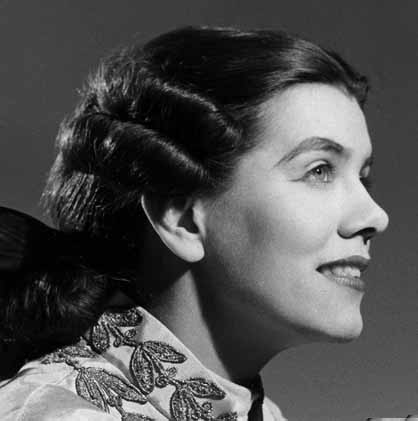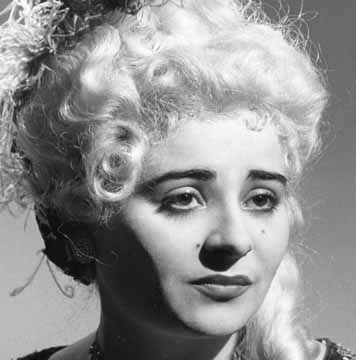Key Word Search
Multi-Field Search
Browse
Repertory Report
Performers Report
Contacts
Met Opera Website
Le Nozze di Figaro
Metropolitan Opera House, Sat, November 17, 1951
Debut : Mildred Miller, Gabor Carelli
Le Nozze di Figaro (120)
Wolfgang Amadeus Mozart | Lorenzo Da Ponte
- Figaro
- Cesare Siepi
- Susanna
- Nadine Conner
- Count Almaviva
- John Brownlee
- Countess Almaviva
- Victoria de los Angeles
- Cherubino
- Mildred Miller [Debut]
- Dr. Bartolo
- Salvatore Baccaloni
- Marcellina
- Jean Madeira
- Don Basilio
- Alessio De Paolis
- Antonio
- Lorenzo Alvary
- Barbarina
- Roberta Peters
- Don Curzio
- Gabor Carelli [Debut]
- Peasant
- Paula Lenchner
- Peasant
- Margaret Roggero
- Conductor
- Fritz Reiner
- Director
- Herbert Graf
- Set Designer
- Jonel Jorgulesco
- Costume Designer
- Ladislas Czettel
- Choreographer
- Zachary Solov
Le Nozze di Figaro received ten performances this season.
Review 1:
Review of Noel Straus in The New York Times
NEWCOMER SCORES IN 'FIGARO' AT MET
Mildred Miller Makes Debut in Cherubino role as Opera is Restored to Repertory
Mozart's "The Marriage of Figaro," which was not given last year at the Metropolitan, was restored to the repertory Saturday night with a meticulously prepared, if somewhat spotty, performance. Two of the participants made their debuts with the company on this occasion. Mildred Miller, who scored heavily as the Cherubino of the cast, and Gabor Carelli heard in the minor role of Don Curzio.
Miss Miller's conspicuous success, both as vocalist and actress, in the demanding part assigned her, was the real news of the presentation. It was also as Cherubino that she had first appeared in opera with the New England Opera Theatre previous to receiving an award for study abroad, which led to her becoming a member of the Stuttgart Opera in 1949. Last summer she sang at the Edinburgh Festival with the Glyndebourne company.
Everything in Her Favor
The young newcomer had everything in her favor, including a handsome magnetic stage presence; a fine, fresh voice expertly produced, and pronounced histrionic ability. Her free, perfectly placed tones were remarkable for their velvety texture. They were invariably true to pitch, steady, and used with uncommon grace of melodic outline and charm of coloring.
Making an appealing figure in her male attire as the Count's page and simulating the awkward gestures of the lovelorn youth with effective skill, Miss Miller delivered her two chief numbers in a manner memorable for warmth and insight, musicality and intelligence.
Among the several artists who had not been heard here previously this opera were Mr. Siepi, as Figaro; Miss de los Angeles, as the Countess and Miss Conner, as Susanna. Mr. Siepi's characterization of the Count's crafty servant was lacking in sparkle and life, though the artist sought to provide these qualities in his work. And if his singing was always rich in sound, it nevertheless had a prevailing darkness of timber that would have been better suited to the music of the Count.
All of the details of Miss Conner's' interpretation of Susanna, were carefully considered. But her delineation was overly dainty, without the vigor or vitality demanded, while the voice sounded strangely thin and unsupported. More commendable, in general was the Countess of Miss de los Angeles, whose vocalism was often first rate, except at the upper and lower end of the scale, where the tones lost quality.
Mr. Brownlee's portrayal of the Count has gained somewhat in power, and he sang more impressively than usual in the part. Mr. Carelli, as Don Curzio, proved acceptable vocally in the slight role. The other buffo characters, comprising the Bartolo of Mr. BaccaIoni the Don Basilio of the deft Mr. de Paolis, and the Marcellina of Miss Madeira, arrived at their customary degree of meritoriousness.
The stage pictures and costumes were altogether attractive, especially in the third act, where the ballet danced most picturesquely in the Fandango, with delightful choreography by Zachary Solov. Less up to expectations was the orchestral support, for Mr. Reiner led his forces in the pit with an aloofness and absence of enthusiasm that were peculiarly at variance with his attention to all sorts of minutiae in the superb score.
Photographs of Victoria de los Angeles as Countess Almaviva and Mildred Miller as Cherubino in Le Nozze di Figaro by Sedge LeBlang.
Search by season: 1951-52
Search by title: Le Nozze di Figaro,
Met careers
- Fritz Reiner [Conductor]
- Cesare Siepi [Figaro]
- Nadine Conner [Susanna]
- John Brownlee [Count Almaviva]
- Victoria de los Angeles [Countess Almaviva]
- Mildred Miller [Cherubino]
- Salvatore Baccaloni [Dr. Bartolo]
- Jean Madeira [Marcellina]
- Alessio De Paolis [Don Basilio]
- Lorenzo Alvary [Antonio]
- Roberta Peters [Barbarina]
- Gabor Carelli [Don Curzio]
- Paula Lenchner [Peasant]
- Margaret Roggero [Peasant]
- Herbert Graf [Director]
- Zachary Solov [Choreographer]
- Jonel Jorgulesco [Set Designer]
- Ladislas Czettel [Costume Designer]

